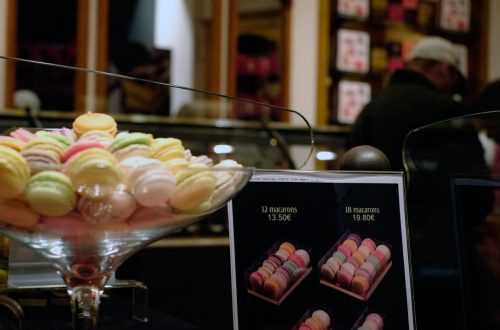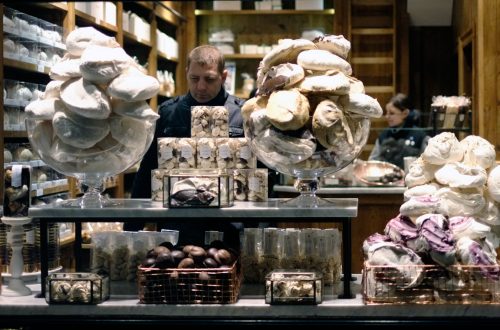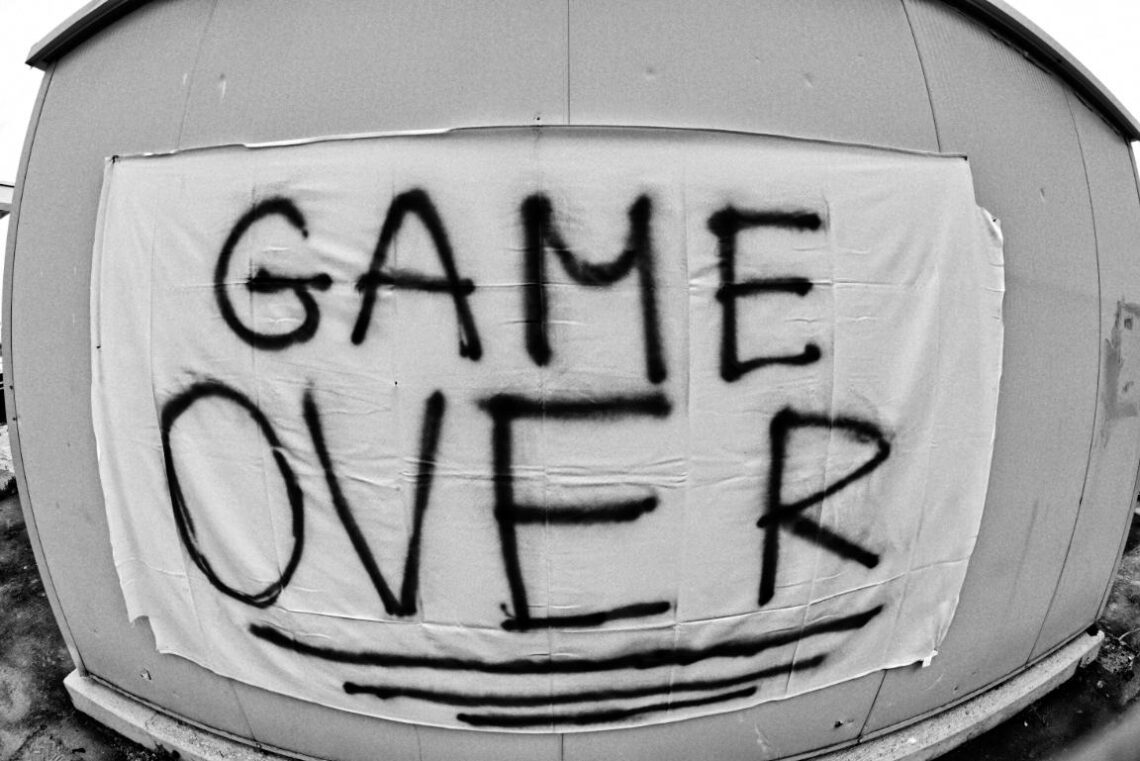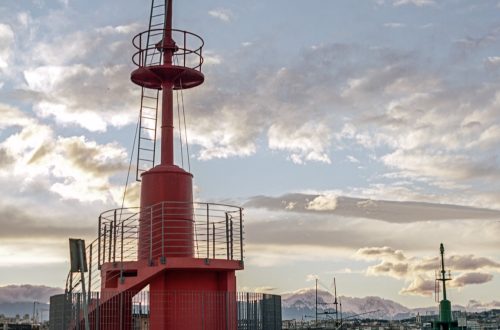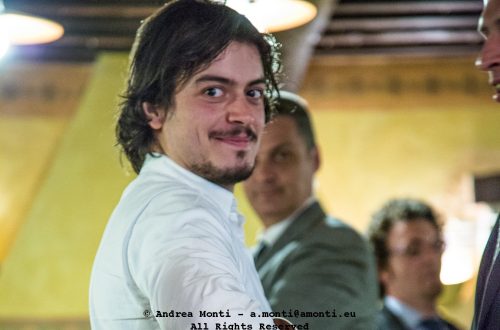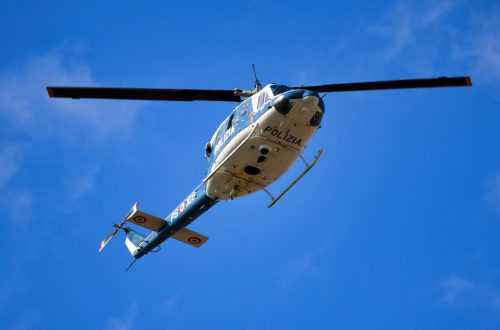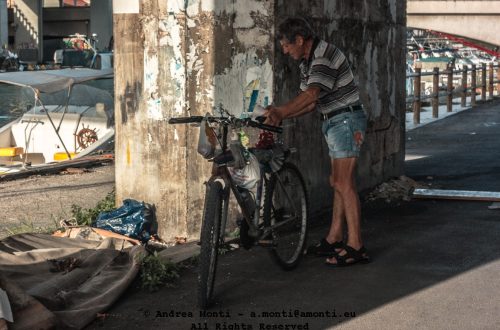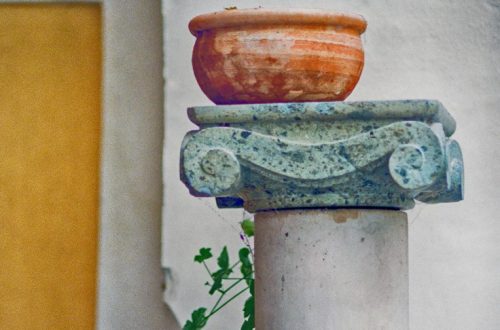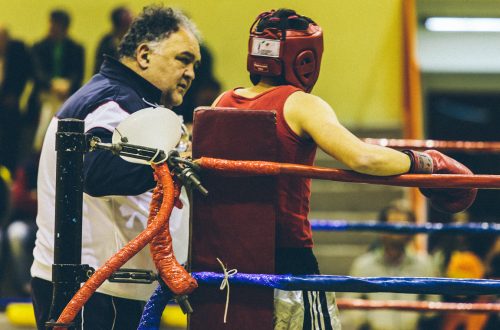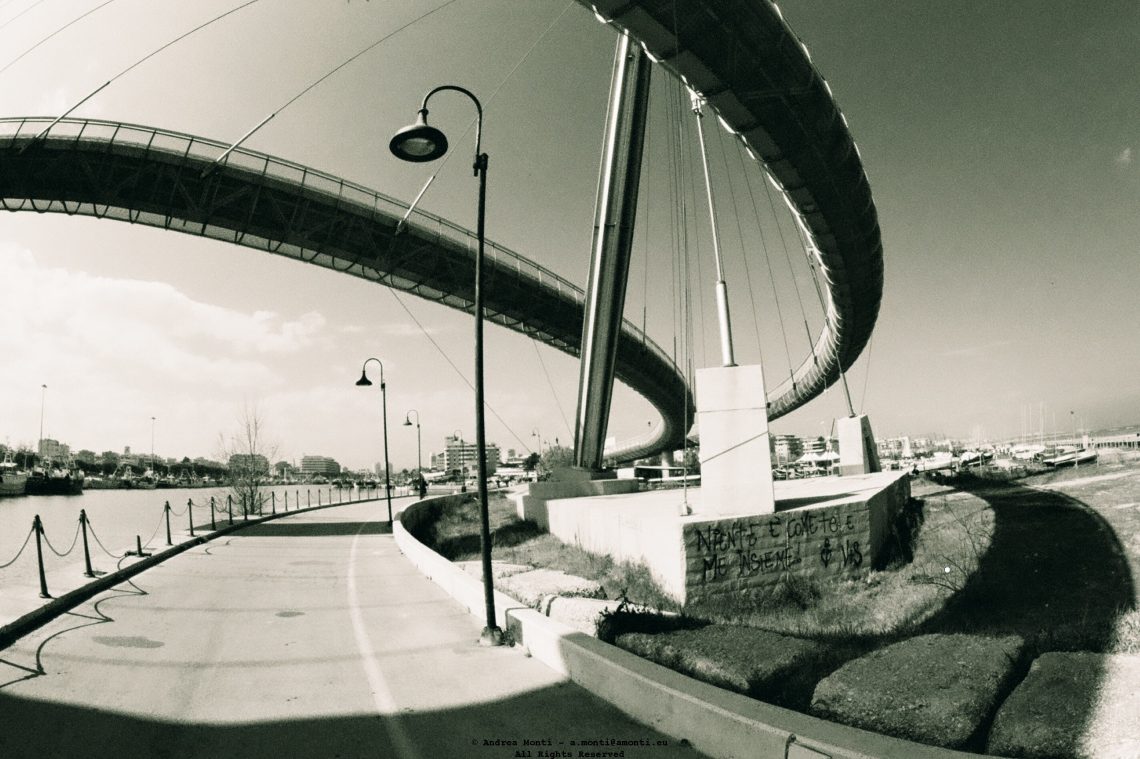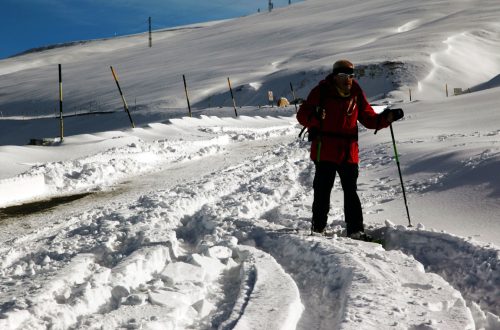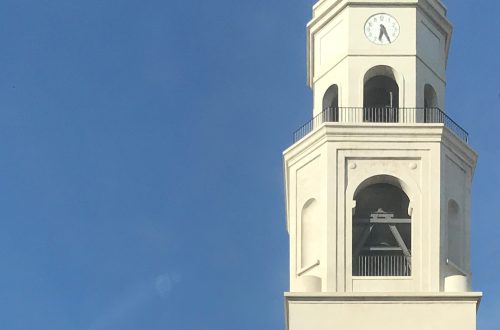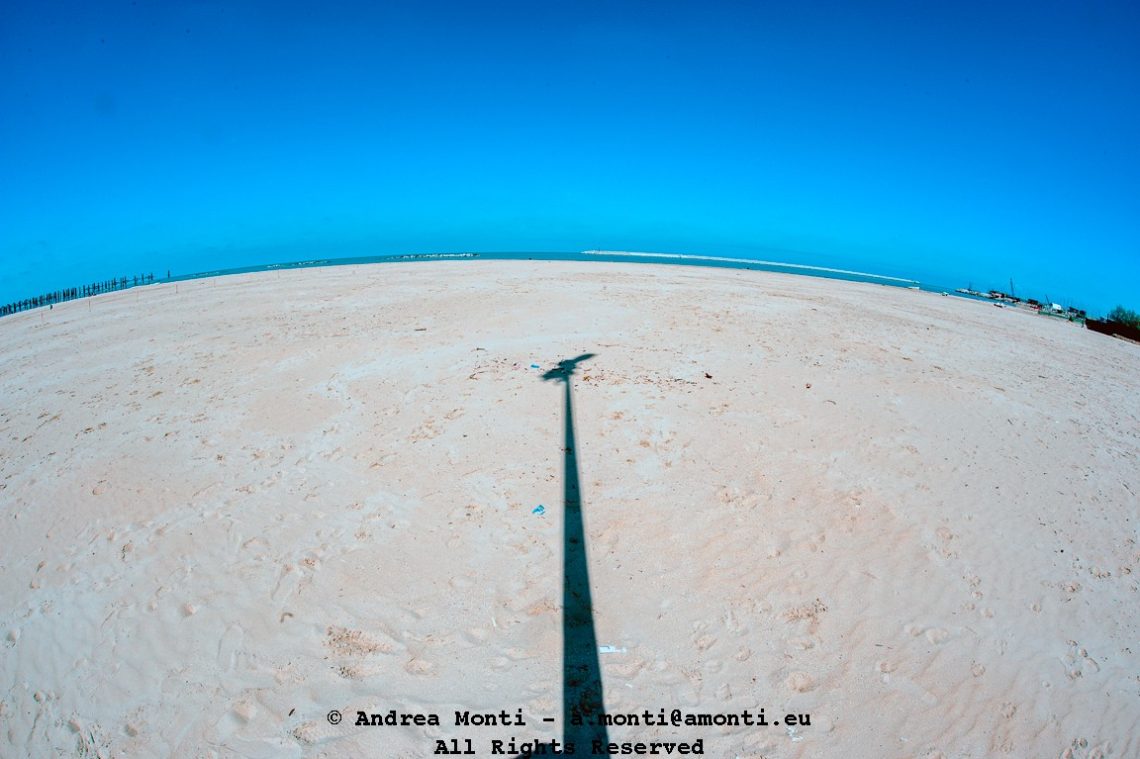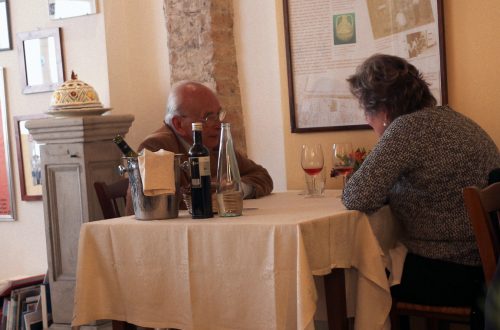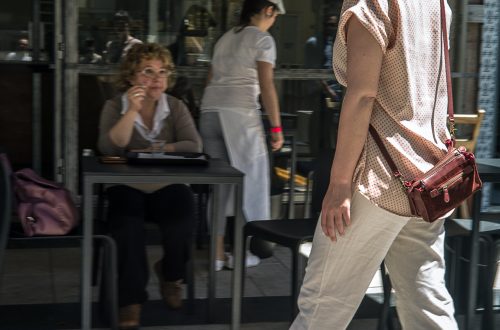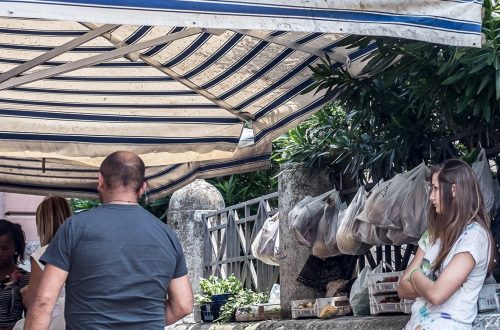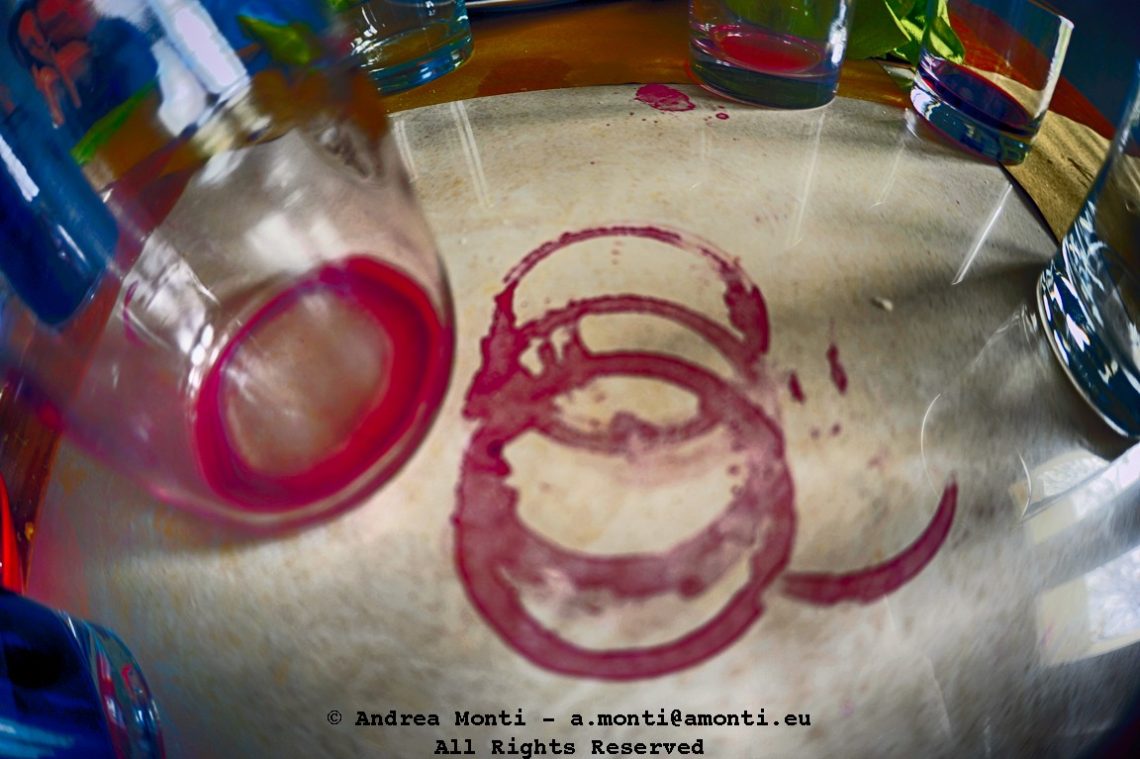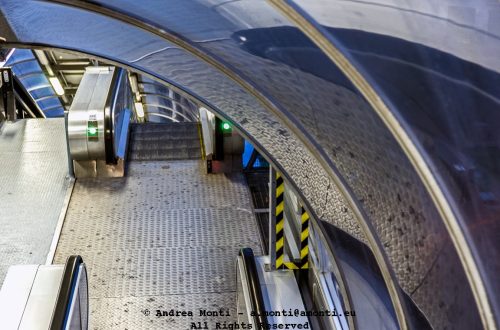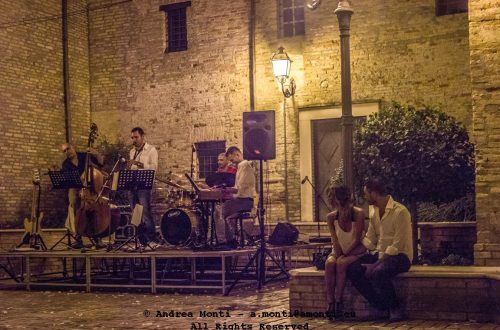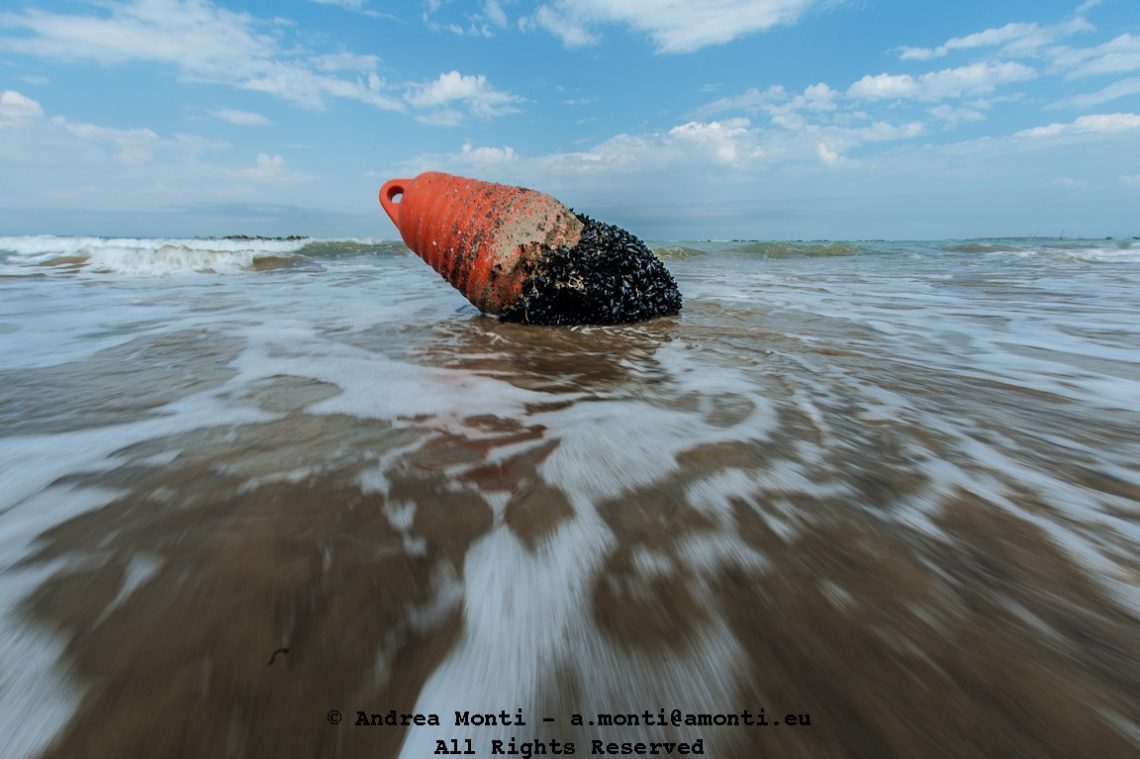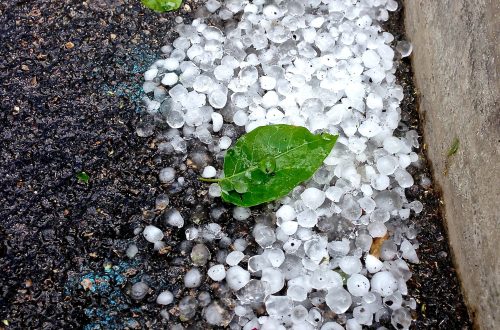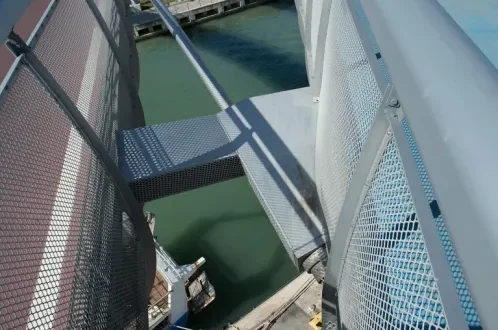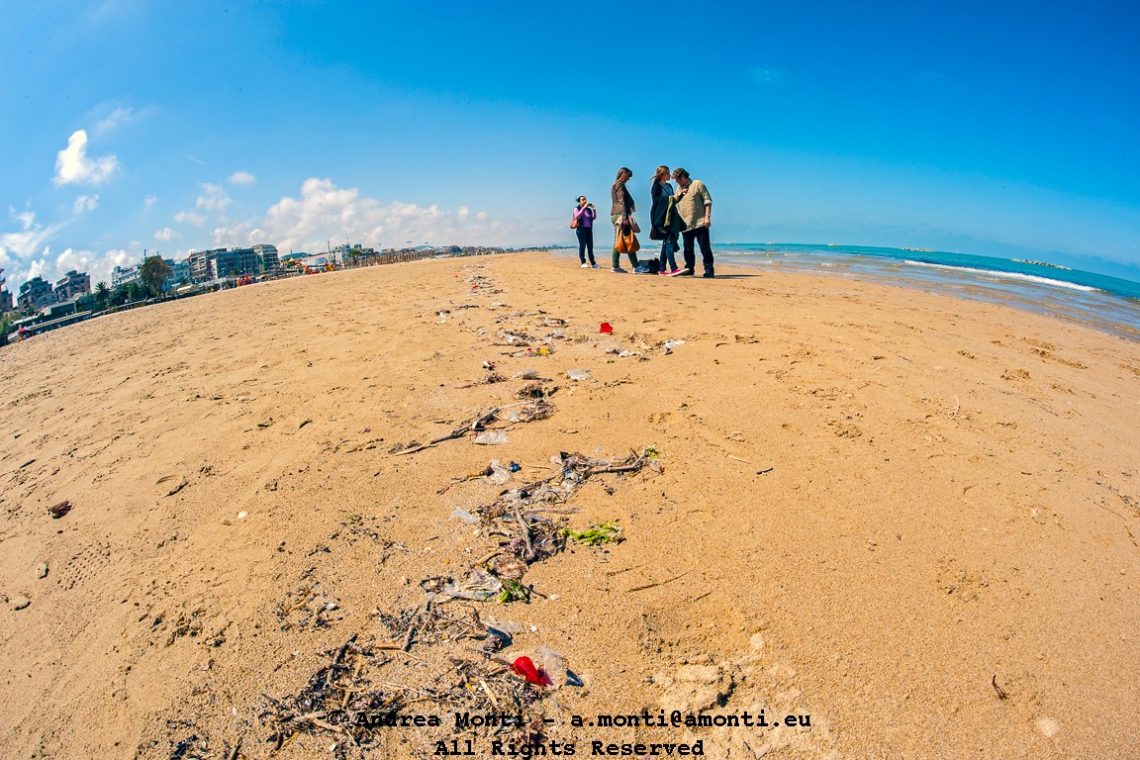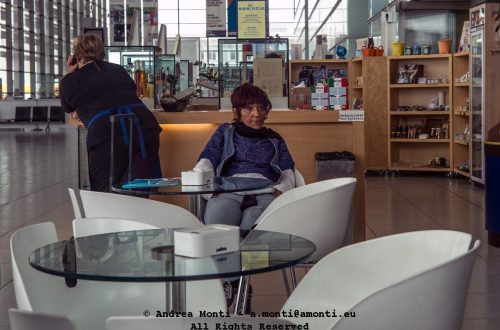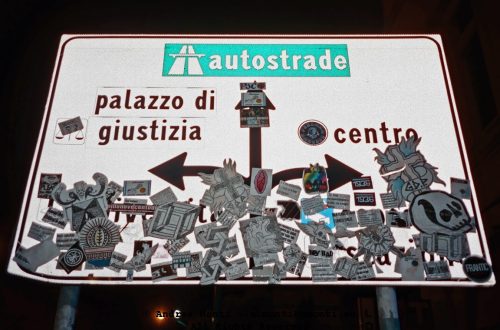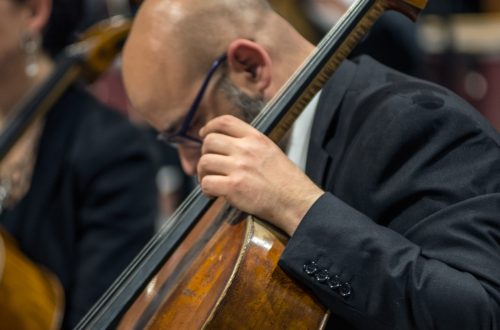-
Nikkor 16mm Fisheye – Three Ways to Make use of Such a Lens
For me, a fisheye is the most challenging lens to use. Unlike other ‘normal’ focal lengths, a fisheye has an inherent deformation of reality. As a result, it is often used to create images with an unreal rendering, reminiscent of M.C. Escher’s self-portrait looking into a transparent globe.However, as happened in music with the advent of digital processors and effects, it is very easy – at least it was for me – to fall into the trap of focusing on the form rather than the message. In other words, as soon as a ‘weird’ looking photo is achieved, that was enough. Just like playing electric guitar back in the days,…
-
Game Over
Photographs like Game Over remind me that sometimes the most direct visual statements are also the most loaded. Here, a simple, hastily spray-painted message on a makeshift surface is transformed into something more imposing by lens choice and framing. Shot on a Nikon F3 with a Nikkor 16mm fisheye, the image carries the unmistakable spatial distortion of that ultra-wide glass. The curvature of the edges pushes the wall and banner into a bowed shape, making the words bulge towards the viewer. It’s a subtle but effective way of amplifying the sense of confrontation—as though the message is leaning into us, impossible to ignore. Technically, the black-and-white treatment strips away distraction…
-
The Boat That Never Left
Docked, stripped, tagged, rusted. I shot close with a fisheye to exaggerate the curvature of the hull and drag the viewer across its surface. The distortion isn’t incidental—it’s structural. The lines bend to reveal scale and tension. This is graffiti over steel, corrosion under paint, void behind broken glass. I exposed for the midtones to hold the whites in the spray and the texture in the oxidised seams. f/8 for consistent edge-to-edge sharpness, ISO 200, 1/125s. Light was flat—overcast sky softening shadows without dulling the forms. The left-to-right arc carries the frame. No central subject. Instead, accumulation. Tags, vents, cables, fractures. The dolphin up top is barely visible but critical—vestigial optimism…
-
Bent
Shot with a Nikon F3 and a 16mm fisheye, this isn’t your typical curved-sky, skateboard-in-midair kind of photo. Instead of pushing the distortion to the front of the image, I let it sneak in at the edges—just enough to bend the rules. The subject is ordinary: a coastal bridge, a pedestrian path, the usual lampposts lining a curve. But the lens pulls the whole scene inward, gives it weight and sweep, turns a flat space into something that stretches, leans, folds in on itself. I like using fisheye glass this way—not as a gimmick, not for laughs, but to see how geometry shifts when you force perspective without centring it.…
-
Noon on the Beach
this image hinges on simplicity and distortion. The sun was directly overhead, leaving the shadow of the pole as a near-perfect sundial, slicing the centre of the frame from bottom to vanishing point. That shadow was the whole reason to shoot: absolute verticality rendered into graphic contrast on a near-featureless plane. The lens dictates the structure. At 16mm, lines bow. The horizon curves. Perspective exaggerates. I leaned into it—there’s no attempt to correct distortion in post. The intention was not to imitate a rectilinear frame, but to emphasise space as abstraction. The beach becomes a sphere, the sky a ceiling, and the tiny trace of buildings at the perimeter only…
-
Red Wine Makes Good Blood…
I made this image at the end of a long lunch — the kind where conversation lingers long after the plates are cleared, and the table becomes less of a place to eat and more a canvas of what just happened. The residue of red wine had bled into the paper surface, leaving behind those familiar circular stains — not accidental, not staged, just there. And I leaned in, glass still in hand, and shot. Technically, this is an exercise in distortion and proximity. I used a wide lens, close focus, and a shallow depth of field. The resulting visual field is warped, but purposefully. You can see the sweep…
-
The Misplaced Buoy
Kneeling in the surf with the camera just above waterline, I framed this beached buoy like a stranded witness—half-devoured by barnacles, its functional past eroded by time and tide. The wave motion is deliberate: a slow shutter gave the water its painterly strokes, pulling the viewer toward the object with a sense of gentle urgency. The wide-angle perspective exaggerates scale and places the buoy in stark contrast with the horizon. The red-orange plastic punctures the cool blues of sea and sky, a sharp chromatic discord that anchors the entire composition. It’s an aggressive intrusion into the otherwise pastel calm of the shoreline, yet visually satisfying because of the balance created…
-
On the Edge of the World
This image is the outcome of a technical test as much as it is a commentary on environment and perception. I wanted to see how the venerable 1973 Nikkor 16mm f/3.5 fisheye would behave on the full-frame sensor of a Nikon D700. The result is a picture pulled to its edges, both optically and metaphorically. What this lens gives in distortion, it returns in expressive tension. The beach curves like the edge of a planet. The sky presses down as if it’s wrapping itself around the scene. A single line of debris cuts through the frame, pulling the eye toward a loosely gathered group of people, whose presence feels both…


